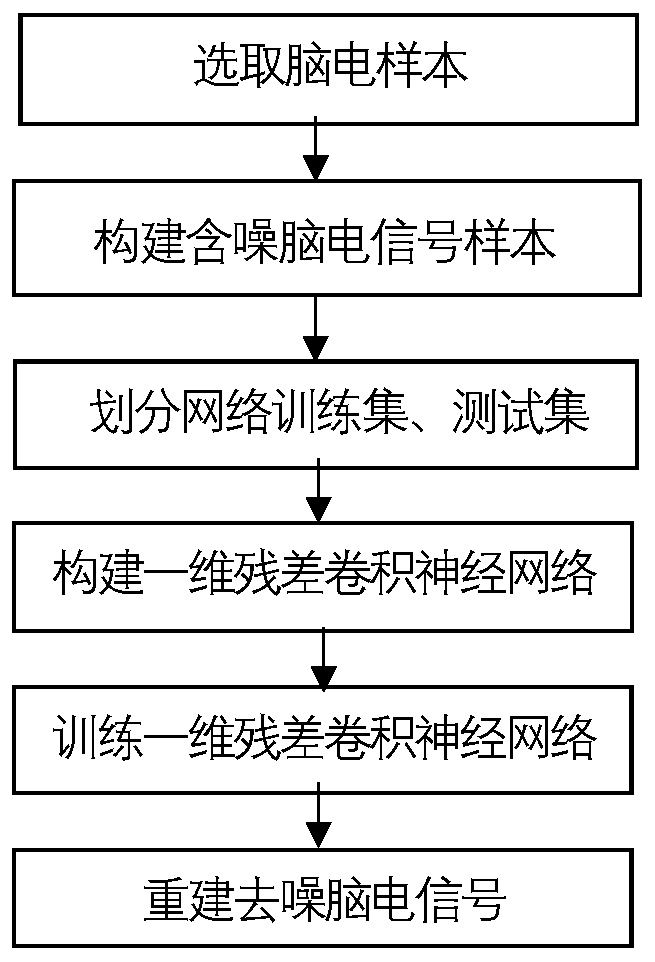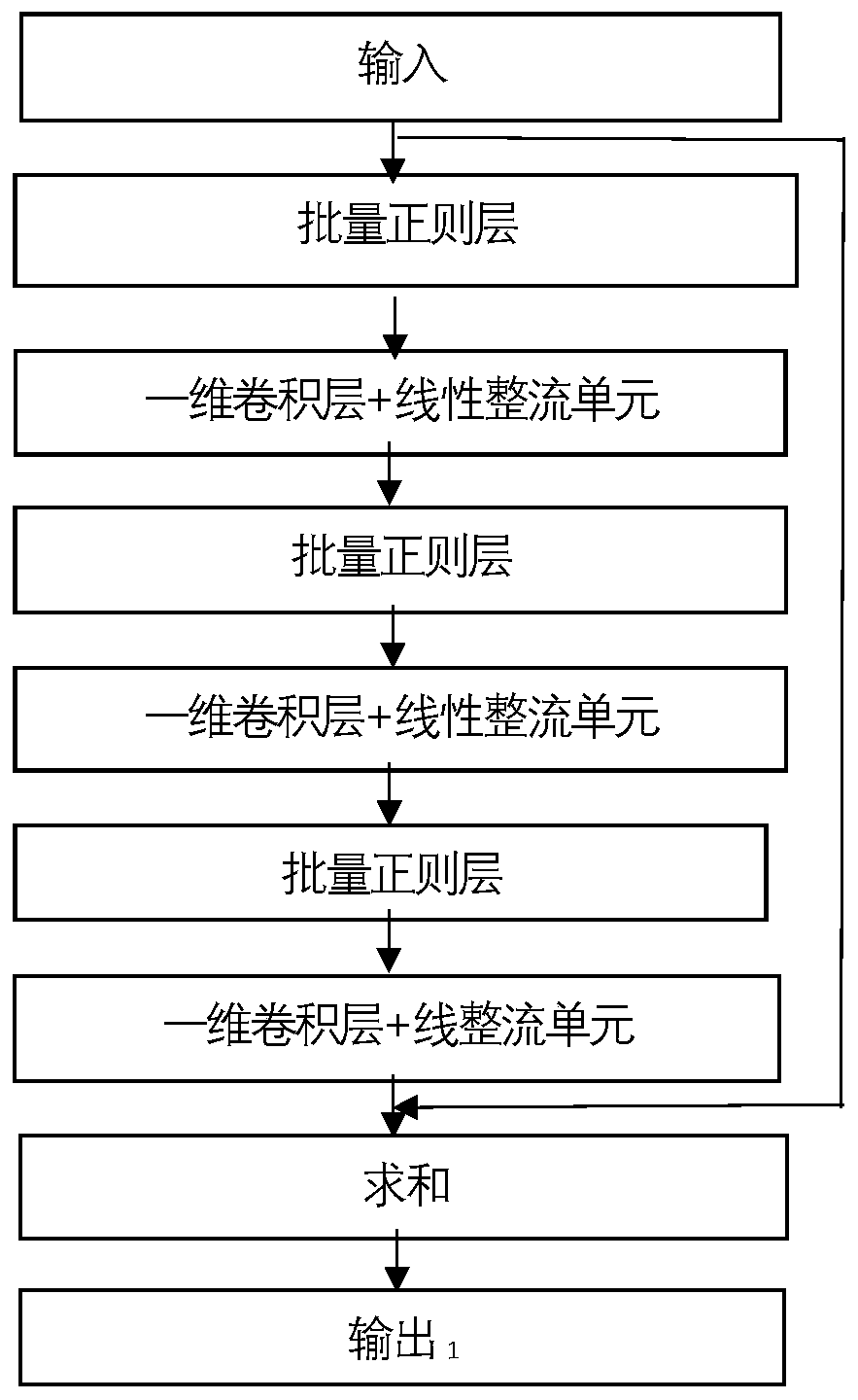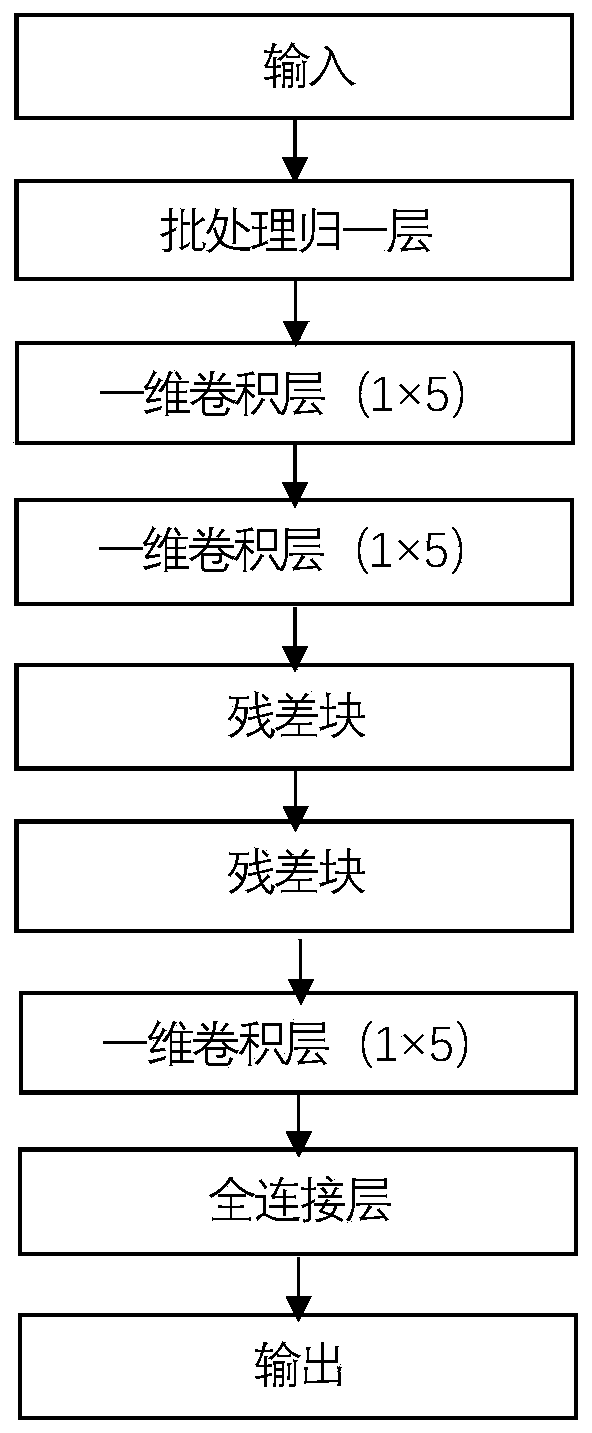Electroencephalogram signal denoising method based on one-dimensional residual convolutional neural network
A convolutional neural network, EEG technology, applied in instruments, computing, character and pattern recognition, etc., can solve the problems of signal delay analysis, signal distortion, inability to meet EEG noise reduction requirements, etc., to improve the signal-to-noise ratio and Root mean square error, reduce denoising time, avoid the effect of gradient explosion
- Summary
- Abstract
- Description
- Claims
- Application Information
AI Technical Summary
Problems solved by technology
Method used
Image
Examples
Embodiment 1
[0043] Take 20 sample data selected from the EEG collection on the physiionet website as an example, the sampling frequency is 256Hz, and the signal within the time period of 0 to 1 minute is used as input. Each sample data represents a 15360×23 matrix, each row represents the voltage signal of an electrode channel within 1 minute, and there are 23 electrode channels in total. The EEG signal denoising method based on one-dimensional residual convolutional neural network consists of the following steps (such as figure 1 shown):
[0044] (1) Select EEG samples
[0045] Select m EEG samples from the Physionet database and mark them as EEG samples E D×N , where D is the number of channels of the EEG signal, N is the number of sampling points of the EEG signal, in the EEG sample E D×N Among them, D is 23, N is 60s×256Hz sampling points, and this data is sent as input to the one-dimensional residual convolution network. Before feeding into a 1D residual convolutional network for...
Embodiment 2
[0070] Take 20 sample data selected from the EEG collection on the physiionet website as an example, the sampling frequency is 256Hz, and the signal within the time period of 0 to 1 minute is used as input. Each sample data represents a 15360×23 matrix, each row represents the voltage signal of an electrode channel within 1 minute, and there are 23 electrode channels in total. The EEG signal denoising method based on one-dimensional residual convolutional neural network consists of the following steps:
[0071] (1) Select EEG samples
[0072] This step is the same as in Example 1.
[0073] (2) Constructing noisy EEG signal samples
[0074] This step is the same as in Example 1.
[0075] (3) Divide the network training set and test set
[0076] The data enhancement method is used to expand the EEG samples and the noisy EEG signal samples, and divide them into network training set and test set respectively. The data enhancement method is as follows: all the EEG signals in t...
Embodiment 3
[0082] Take 20 sample data selected from the EEG collection on the physiionet website as an example, the sampling frequency is 256Hz, and the signal within the time period of 0 to 1 minute is used as input. Each sample data represents a 15360×23 matrix, each row represents the voltage signal of an electrode channel within 1 minute, and there are 23 electrode channels in total. The EEG signal denoising method based on one-dimensional residual convolutional neural network consists of the following steps:
[0083] (1) Select EEG samples
[0084] This step is the same as in Example 1.
[0085] (2) Constructing noisy EEG signal samples
[0086] This step is the same as in Example 1.
[0087] (3) Divide the network training set and test set
[0088]The data enhancement method is used to expand the EEG samples and the noisy EEG signal samples, and divide them into network training set and test set respectively. The data enhancement method is as follows: all the EEG signals in th...
PUM
 Login to View More
Login to View More Abstract
Description
Claims
Application Information
 Login to View More
Login to View More - R&D
- Intellectual Property
- Life Sciences
- Materials
- Tech Scout
- Unparalleled Data Quality
- Higher Quality Content
- 60% Fewer Hallucinations
Browse by: Latest US Patents, China's latest patents, Technical Efficacy Thesaurus, Application Domain, Technology Topic, Popular Technical Reports.
© 2025 PatSnap. All rights reserved.Legal|Privacy policy|Modern Slavery Act Transparency Statement|Sitemap|About US| Contact US: help@patsnap.com



